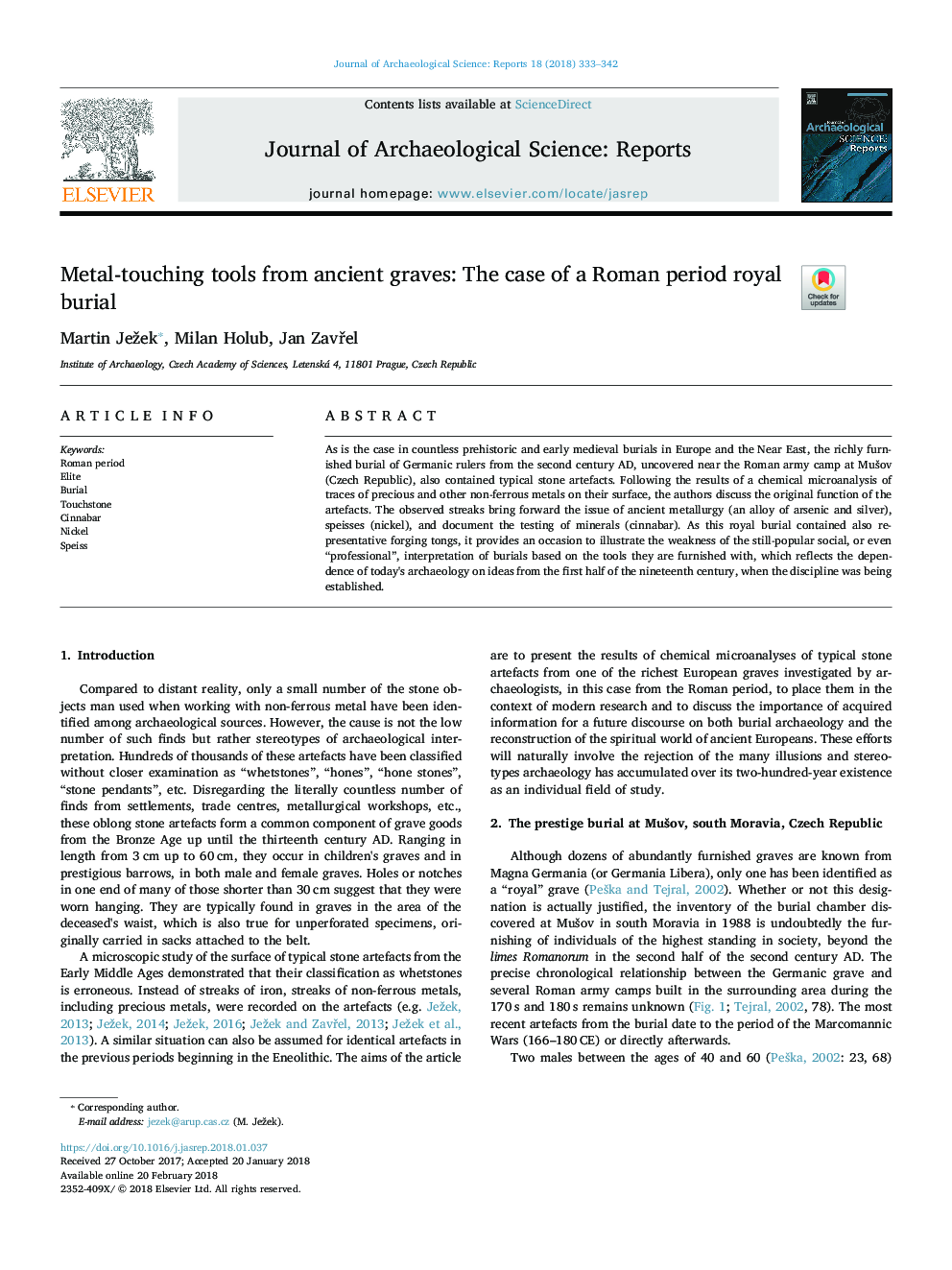| Article ID | Journal | Published Year | Pages | File Type |
|---|---|---|---|---|
| 7444923 | Journal of Archaeological Science: Reports | 2018 | 10 Pages |
Abstract
As is the case in countless prehistoric and early medieval burials in Europe and the Near East, the richly furnished burial of Germanic rulers from the second century AD, uncovered near the Roman army camp at MuÅ¡ov (Czech Republic), also contained typical stone artefacts. Following the results of a chemical microanalysis of traces of precious and other non-ferrous metals on their surface, the authors discuss the original function of the artefacts. The observed streaks bring forward the issue of ancient metallurgy (an alloy of arsenic and silver), speisses (nickel), and document the testing of minerals (cinnabar). As this royal burial contained also representative forging tongs, it provides an occasion to illustrate the weakness of the still-popular social, or even “professional”, interpretation of burials based on the tools they are furnished with, which reflects the dependence of today's archaeology on ideas from the first half of the nineteenth century, when the discipline was being established.
Related Topics
Social Sciences and Humanities
Arts and Humanities
History
Authors
Martin Ježek, Milan Holub, Jan ZavÅel,
